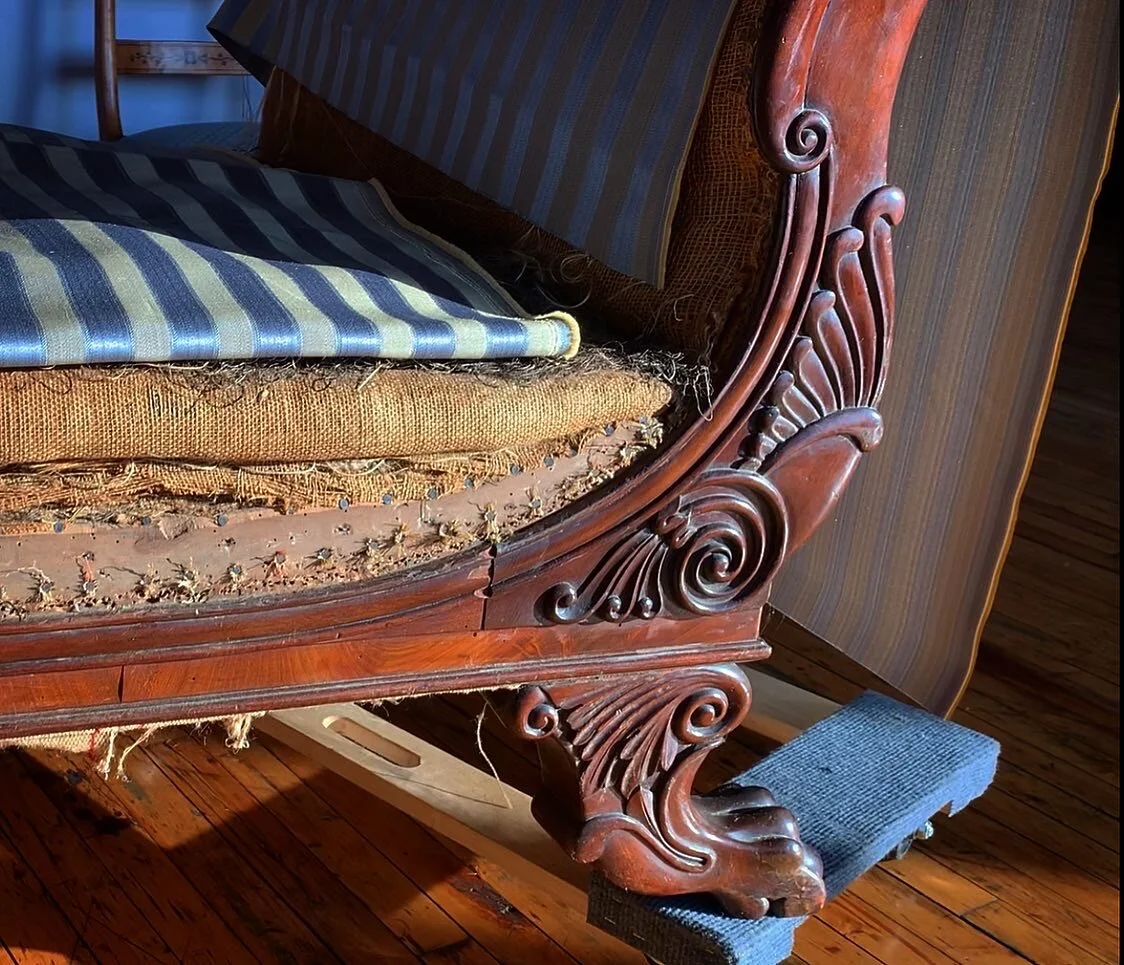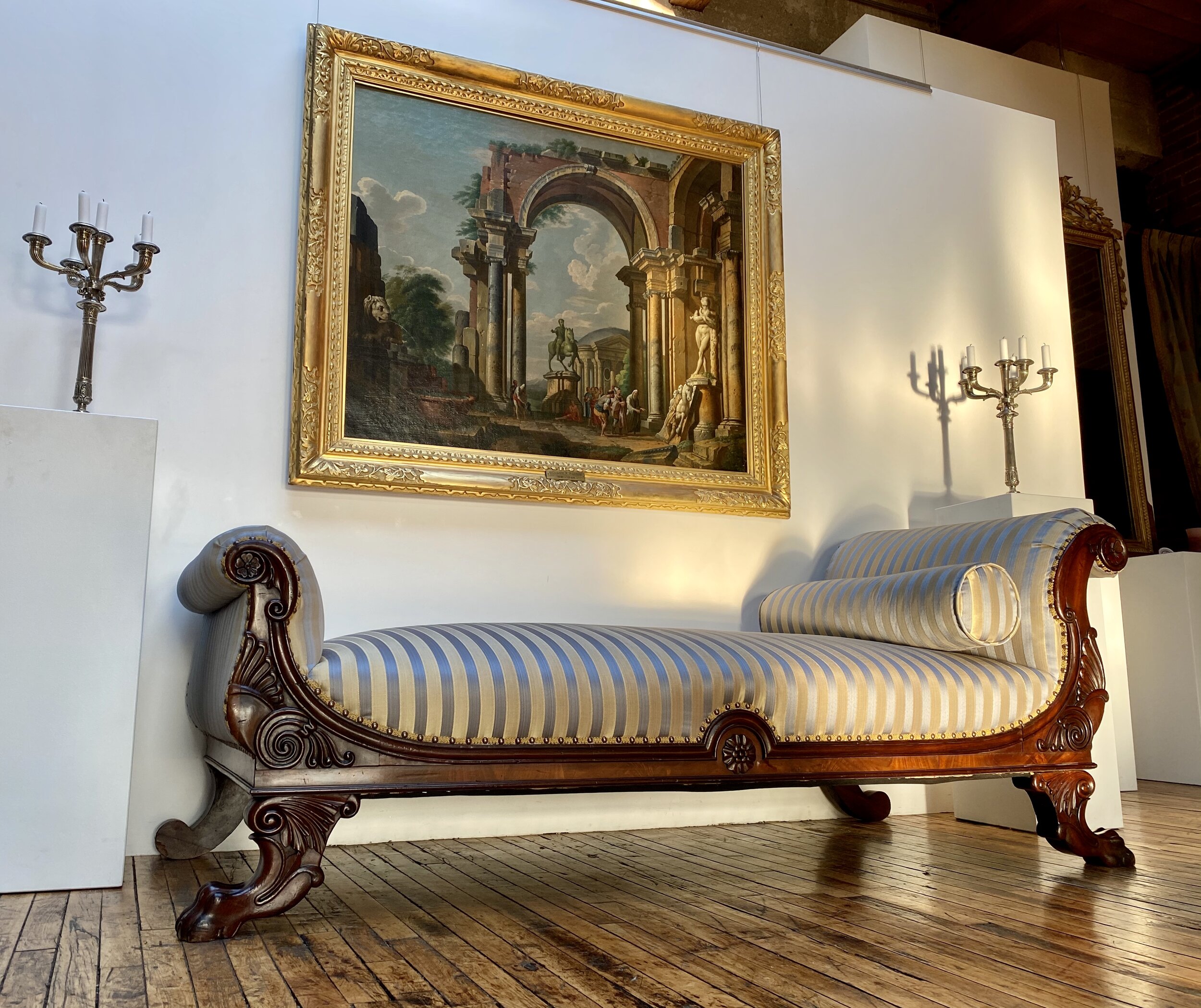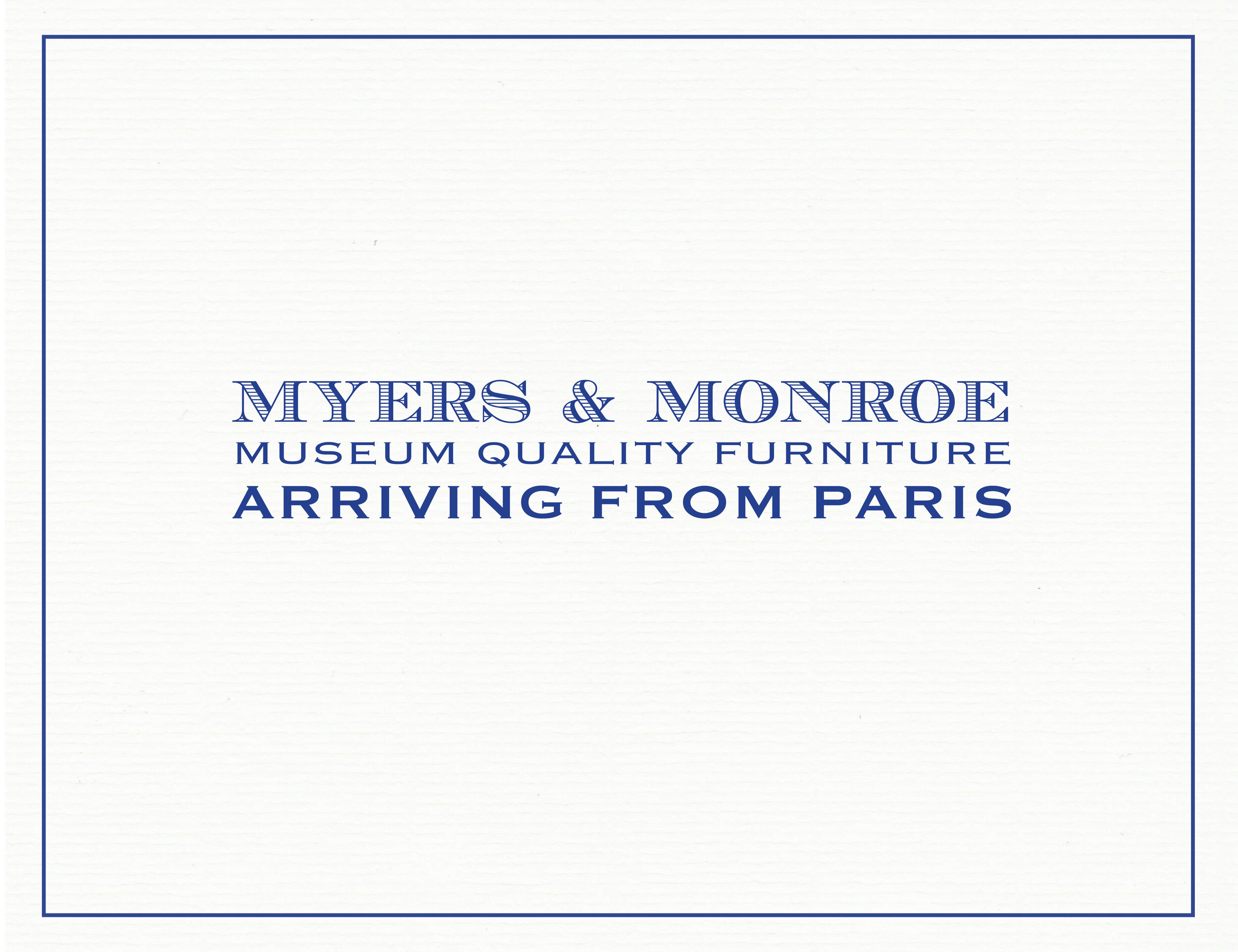Late English Regency Mahogany Sofa circa 1830 (SOLD)
Regency designates, imprecisely, a style which emerged during the 1790s and which evolved and remained in vogue well into the 1830s. The name comes from the regency of Prince George, who ruled in place of King George III of England when the monarch’s mental health had deteriorated. This robust neoclassical style is the English version of the French Empire style, which is however more varied and less strict than the furniture of Napoleon’s aesthetic. There is something flamboyant, exotic, and masculine in Regency pieces, like the young prince.
The Regency style was diversely expressed in England, but elsewhere as well, and over a relatively long period of time. The buying power of the English clientele resulted in much more Regency furniture being made than any other previous style. The English style strongly influenced the tastes of continental Europe by 1830 and it is therefore hard to say if this daybed is French, English, or Italian. The provenance, however, is the estate of a late French Chief Architect of Historical Monuments who had retired to the city of Pau in the South of France.
This daybed belongs to the heavier variant of the Regency style which developed around 1820. Red mahogany was the principal wood used, and one sees how this wood, beautifully sculpted and polished, is the primary source of decoration on such a Regency piece.
The rose sculpted into the center of this daybed’s frame, enclosed by a semi-circle, resembles the Tudor rose which is a symbol of England. However, the sculpted decor of lotus flowers and acanthus leaves are seem more French or Italian in nature.
The asymmetrical and exuberant sides of the bed are consistent with this later, heavier version of the regency style. The forms of an earlier piece of similar quality might have been less pronounced and more formal, if you will. Exaggeration of form often takes place during the later years of a style as makers seek to innovate within the confines of a familiar style they have executed over and over again.
There is a capriciousness to English pieces from this stage of the evolution of European neoclassicism not present in French Empire pieces. The English were not quite as serious and codified as the French who were indeed masquerading as people of ancient times with near academic precision. One might also catch a glimpse of something vaguely sinister in this interesting daybed, which evokes a dark and mysterious past.
H: 30.5 inches. L: 6 ft 10 inches. D: 32.75 inches.
Myers & Monroe, LLC




